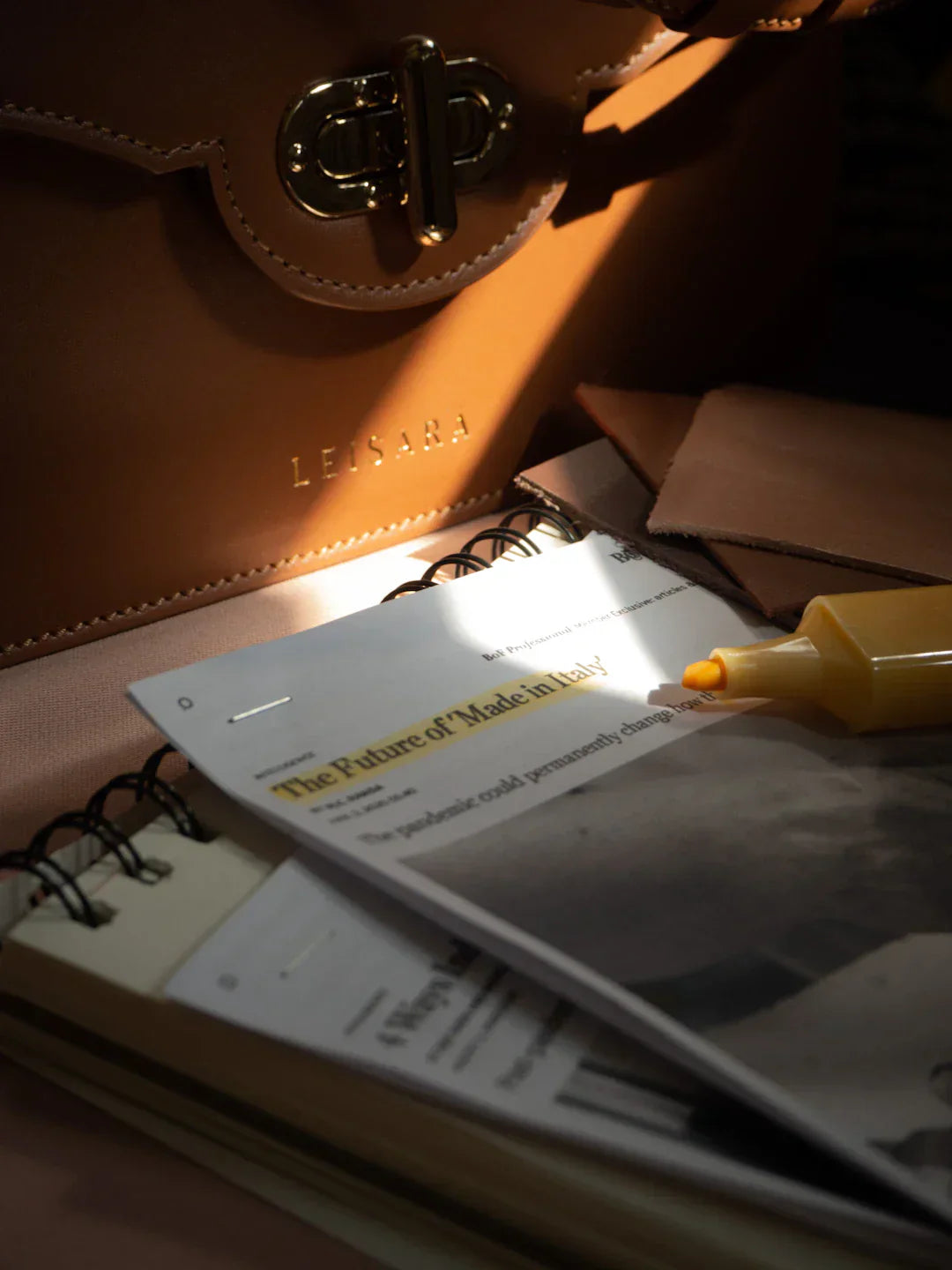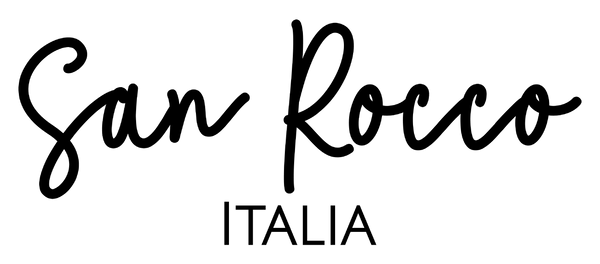
The Future of the Italian Leather Industry: Trends & Insights
Share
Overview
The Italian leather industry is evolving with a focus on handcrafted goods, sustainability, and technology. Key trends include the rise of eco-friendly practices, the demand for luxury items that reflect consumer values, and the integration of modern technology with traditional craftsmanship. As global markets expand, Italian artisans face competition while emphasizing quality and uniqueness. Future success lies in personalized offerings, innovative designs, and investing in the next generation of artisans. Overall, the industry is poised for a vibrant future by balancing heritage with contemporary demands.
Frequently Asked Questions
1. What defines the quality of Italian leather?
2. Why are handcrafted Italian handbags becoming popular?
3. How is the Italian leather industry addressing sustainability?
4. What role does technology play in the Italian leather industry?
5. How are consumer preferences changing in the luxury market?
The Italian leather industry has long been renowned for its superior quality, exquisite craftsmanship, and timeless designs. As we venture further into the 21st century, the future of this luxurious trade is becoming increasingly complex yet fascinating. From sustainable practices to innovative designs, the landscape of the Italian leather industry is set to evolve. In this blog, we will explore the emerging trends shaping the industry, the construction of handcrafted Italian handbags, and what this means for consumers and retailers alike.
The Legacy of Italian Leather Craftsmanship
Italian leather has a storied reputation that dates back centuries. Known for its remarkable durability and aesthetic appeal, the leather is often the result of traditional tanning methods passed down through generations. This rich heritage not only contributes to the allure of Italian leather handbags but also reinforces the authenticity and prestige associated with the industry.
The Significance of Handcrafted Goods
One key element that defines the future of the Italian leather industry is the focus on handcrafted products. While mass production has become the norm in many sectors, consumers are increasingly drawn to the artistry and uniqueness of handcrafted items. Handcrafted Italian handbags, in particular, are becoming sought-after treasures. Made with meticulous attention to detail and superior materials, these handbags suggest a level of individuality that machine-made products cannot replicate.
Sustainability in the Italian Leather Industry
As global concerns about environmental impacts grow, the Italian leather industry is beginning to take significant strides toward sustainability. The demand for eco-friendly practices influences how leather is sourced, tanned, and finished. Becoming more sustainable not only aligns with consumer values but also opens up a new market for innovative products.
Eco-Friendly Tanning Processes
Tanning methods can often involve harmful chemicals that have a negative impact on the environment. However, Italian artisans have traditionally used environmentally friendly techniques, such as vegetable tanning, which uses natural materials. This focus on sustainable practices has the potential to redefine the standards of quality in the leather industry, ensuring that Italian leather handbags maintain their luxurious appeal while promoting a healthier planet.
Recycled and Upcycled Materials
Another fascinating development in the Italian leather sector is the use of recycled and upcycled materials. By creatively repurposing existing leather products, artisans can create new designs and reduce waste. This trend not only supports sustainable practices but also encapsulates the innovative spirit of Italian craftsmanship.
The Role of Technology in Craftsmanship
Advancements in technology are also shaping the future of the Italian leather industry. While tradition remains at its core, merging old-world techniques with modern technology can enhance efficiency without sacrificing quality. From design software that assists in the crafting process to improved manufacturing methods that maintain artisanal quality, technology offers a unique synergy that can propel the leather industry into the future.
Digital Marketing and E-Commerce
With the rise of e-commerce, Italian leather brands are leveraging digital marketing to reach broader audiences. Online platforms enable companies to showcase their handcrafted Italian handbags directly to consumers worldwide, breaking geographical barriers that once limited their market reach. Furthermore, social media provides a space for brands to tell their stories, highlight artisans, and engage meaningfully with potential customers.
Consumer Preferences: Luxury with Purpose
Today's consumers are more conscious of their purchases than ever before. They seek luxury products that resonate with their values, whether that be sustainability, ethical production, or cultural heritage. The Italian leather industry is uniquely positioned to tap into these evolving consumer preferences, and many brands are doing just that.
The Rise of Brand Transparency
Today's buyers want transparency regarding where and how products are made. Artisans and brands that are open about their sourcing and production practices tend to earn greater consumer trust. Sharing the journey behind handcrafted Italian handbags - from the selection of high-quality leather to the finishing touches added by skilled artisans - not only educates consumers but establishes a connection that enhances brand loyalty.
The Global Impact and Export Markets
The Italian leather industry plays a vital role in the global market, with exports steadily increasing. While traditional markets in Europe and North America remain strong, there is a notable surge in demand from emerging markets in Asia and the Middle East. This expansion creates new opportunities and challenges for Italian leather brands, as they must adapt their offerings to various cultural preferences while maintaining their unique identity.
Challenges in Global Competition
As the industry expands internationally, Italian leather brands face heightened competition from countries that produce leather goods at lower costs. To maintain their competitive edge, Italian artisans must continue to emphasize quality, craftsmanship, and the unique cultural narrative intertwined with their products. Highlighting the exclusivity and artistry found in handcrafted Italian handbags will be essential in differentiating from competitors.
The Future of Retail: Omnichannel Strategies
The retail landscape is transforming dramatically, and the Italian leather industry is not immune to these changes. A successful future strategy will involve embracing omnichannel approaches that combine physical and digital shopping experiences. Consumers appreciate the ability to see and feel the quality of Italian leather handbags in-store while also enjoying the convenience of online shopping.
Personalization and Customization Trends
As competition increases, offering personalized and customizable options can set brands apart. The ability for customers to choose colors, textures, or even add initials to their handbags enhances the shopping experience. This attention to individual preferences fosters a deeper emotional connection between the consumer and the brand.
Design Innovations and Evolution
Innovation in design is vital for the growth of the Italian leather market. With evolving fashion trends, there is an increasing need for modern designs that still respect traditional craftsmanship techniques. Balancing classic styles with contemporary aesthetics will allow brands to attract diverse demographics and remain relevant in a fast-paced world.
The Influence of Emerging Designers
Young designers are emerging from Italy's fashion institutes, bringing fresh perspectives and creative ideas to the industry. The Italian leather sector must embrace this generational shift, as these new voices challenge conventional norms and push boundaries. Collaborations between seasoned artisans and up-and-coming designers can lead to exciting innovations and a renewed appreciation for classic craftsmanship.
Investing in Future Generations
To ensure the longevity of the Italian leather industry, investing in education and training for future artisans is crucial. Initiatives focused on preserving traditional techniques alongside contemporary practices can create a new wave of skilled workers who understand the importance of quality and heritage. Encouraging the next generation to enter the industry not only safeguards the legacy of Italian leather but also invigorates it with new ideas.
Anticipating Change and Embracing Opportunities
The future of the Italian leather industry lies in its ability to adapt to changing consumer demands, embrace sustainability, and harness the power of technology. As artisans continue to craft extraordinary handcrafted Italian handbags that blend traditional techniques with modern innovation, the industry will thrive. Partnerships, collaborations, and a commitment to quality will be paramount in navigating the evolving landscape.
As we look ahead, it's clear that the Italian leather industry is not just surviving; it's evolving. By staying committed to its roots while embracing the changes of tomorrow, artisans are destined to create a vibrant future filled with elegance, sustainability, and uncompromising quality. The renaissance of Italian leather is upon us, promising to captivate hearts and enrich lives for generations to come.
Linked Product
Pienza – Italian Leather Tote Handbag – Bordeaux
The Pienza Italian Leather Tote Handbag in Bordeaux combines elegance with practicality, making it suitable for both everyday use and special occasions. Its three-compartment design ensures that your essentials are organized and secure, while the detachable strap allows for versatile carrying options. Crafted from soft pebbled leather in Italy, this handbag reflects a commitment to quality and timeless style.
View ProductExplore the creations of a fellow Shopify or Wix store owner. Follow this link to their online store. Please be advised that this is a promotional link, and we cannot guarantee the content of the linked store.



